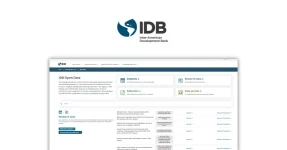Working from home is the dream of many office workers, and the nightmare of others, who even given the opportunity, are reluctant to surrender an office arrangement. As an offshore remote worker, I have a lot of first-hand experience with this arrangement and would like to share some of the benefits and challenges of remote working.
Working from home is the dream of many office workers, and the nightmare of others, who even given the opportunity, are reluctant to surrender an office arrangement. As an offshore remote worker, I have a lot of first-hand experience with this arrangement and would like to share some of the benefits and challenges of remote working.
Approximately three years ago, Link Digital transformed itself into an organisation capable of supporting a remote workforce. This entailed moving all systems online and fundamentally changing the way the workforce organises themselves and work together.
As an AWS consulting partner, Link Digital had a strong starting point, with all critical systems being hosted in the Cloud. One of the first steps Link took was migrating onsite systems to the Cloud. As such Link use Atlassian products for project tracking, and Xero for administrative work. Google Apps and Dropbox are used for collaboration and file sharing. Rapid communication is accomplished with HipChat and Australian based Maxotel provide the VoIP phone capability.
Remote working is far more than having online tools, however.
It requires a whole shift in mindset from everyone in the organisation. Even with all the tools, actually working remotely, and offshore requires strict discipline and fluid collaboration. Although Link uses Zoom video conferencing, this isn’t used nearly as much as IM chat and phone calls. Link conduct scrum stand-ups and retrospectives with Zoom, but the most regular contact is HipChat. This is the case whether in the office or not.
If you’re working remotely for the first time, one common issue myself and colleagues agreed was difficult, is visibility. Someone can sit in an office all day and do absolutely nothing productive, and yet they are, “at work”.
When you first start working remotely there’s a tendency to always be available. Always logging hours, and somehow making it obvious to everyone you’re not lazing around in your PJs all day sipping cocktails by the pool. You’re much more likely to be even more productive than you ever were in the office.
Focused attention is usually one of the really big payoffs for remote workers.
I actually start working around 6 – 7 am when I’m at my absolute sharpest. I can get in 4 – 5 hours of solid uninterrupted work, and my workmates in Australia are only just rolling into the office to start their day at 9 am.
My morning isn’t shaken up by a morning commute, so rather than losing the most precious hours of alert mental focus in transit, the work I’m producing is usually of a much higher caliber.
In terms of availability, in an office environment, very few people sit at their desk for 8 hours solid. If they do, that’s an immediate red flag for productivity because they’re not getting the mental rest they require to work at their best.
At home then, or working remotely, it doesn’t make sense to be wedded to your workstation or phone like an emergency worker on standby. It requires a big mental shift on your part to understand at the office you’re often away from your desk a lot. Getting coffee or in meetings, if not out at lunch or visiting clients. Regular mental rests for creative and knowledge workers is absolutely critical, and yet, there is still an industrial mindset when it comes to productively.
I personally believe the single biggest challenge we face when it comes to work is focussing on hours rather than outcomes. I absolutely loathe logging hours because it doesn’t get anywhere near the actual investment I’m making toward my job. The single biggest change that needs to take place in my view, is not physical locality of workers, but the outcomes they’re producing.
I think the best analogy is paying $80 or more for a five-minute consultation with a Doctor. The lay person is thinking, “$80 for five minutes! I’m in the wrong profession.” Anybody with a bit of knowledge and insight understands you’re not literally paying for those five minutes. You’re paying for an outcome. A diagnosis and solution to your ailment.
Physical location and actual actively has next to nothing to do with output when you are a knowledge or creative worker. As a developer, I’ve smashed away at a problem for a good hour or more making no tangible progress. I take a walk for a few minutes to clear my head, and almost instantly, the solution to the problem is there. I walk another thirty minutes nutting the whole problem out in my head. Upon return to my desk, I spend five minutes implementing the solution. This is how creative thinking works.
If I accurately logged every waking moment that contributes to my capability at work, I’d have to log about 12-14 hours a day. When you’re a developer, architect or creative worker, your mind is thinking about your craft all the time. When I’m not actually working, I’m often reading articles about the latest trends and tools related to my work. How do I log that time?
I went through a phase of logging every single moment of my work day and it was infuriating. It was just so difficult to accurately capture everything I worked on or contributed towards, and yet, depending on your organisation, billable hours are often a big issue. This is another big change that needs to take place. Clients should be paying for projected milestones, not the time it takes to do something. One of the biggest flaws in waterfall projects is how badly people under or over estimate time and effort. Some solutions come very quickly because it deals with an issue you’re very familiar with. Other solutions take a lot longer because of constraints and variables that just couldn’t be foreseen. How does all of this relate back to remote work though?
The greatest benefit of working remotely is finding what works best for you.
The pattern of activity that produces the best results. It’s not always as easy as you’d think, and thinking differently can catch you by surprise.
I discovered a long time ago working in a fairly flexible office environment, a forty minute chunk of intense work, then five to ten-minute walk around the block is a very good formula for being productive throughout the day. At home, a solid stint of ninety minutes will often occur, then I’ll get something done around the house or in the garden.
There are vast amounts of neurological research over the last decade that reveals just how beneficial rest is to productivity. I once had a developer who pushed himself to 14 and 16 hour days. His work was often unusable. He made serious mistakes and frequently lost code accidentally by deleting files unintentionally, reverting code commits and many other fatigue-related errors.
In my younger days developing, I would often look at the buggy code I’d written earlier in the week and wonder to myself what I had been thinking. In reality, I hadn’t been. I often did long uninterrupted stints of coding, and as mental fatigue set in, I made simple, pointless mistakes that later cost me hours in debugging, pinpointing one silly typo or error.
The single most powerful thing you can do as a remote worker in my view is fundamentally change the way you think about work in order to provide the best value to your organisation. Fortunately, there’s a few tools and techniques you can use to accomplish this.
So far as communication and availability goes, I have an IM client installed on my phone so no matter where I am, or what I’m doing, I can nearly always be reached. If it’s critical, I’m a phone call away.
I check my work email twice a day. Once in the morning, once in the afternoon. This approach reduces the number of distractions I have to almost zero. If it’s critical or urgent, people will phone or IM you.
So far as productively goes, this is where you can get truly creative. It also requires some imagination on your part, and yes, you’ll be doing some of the things people view negatively about remote work.
So long as you’re in a quiet productive space, it really doesn’t matter where you’re physically located to do your work. The biggest challenge for you personally is that niggling feeling, “this doesn’t feel like work.” A few weeks ago I needed to take my car in for a service, with a two-hour wait. I sat in a cafe those two hours, sipping coffee and putting in a solid two hours of activity. It didn’t feel like work. We’re so used to being mentally pegged and fighting for concentration, that when that isn’t the case, it doesn’t feel like you’re putting in any real effort.
The other week I needed to study for an important exam. I had been sitting in my office, at the desk reading and taking notes. It occurred to me that on a nice sunny afternoon, I could actually be sitting on the balcony, enjoying the sunshine using my tablet to read and take notes. Again, it felt effortless and enjoyable. I would have absorbed more in that hour or so of intense study that cooped up indoors slogging through the same material.
I’ve come to realise that when it comes to a lot of my work, I’m getting through it far more effectively with far fewer errors than I would have in the office environment. That presents an interesting challenge. It’s much harder to log the same number of hours. I power through my workload in the first few hours of the day. An interesting side effect of this more efficient productively is that in the last few weeks of having time to study my craft, I’ve probably gained more in-depth knowledge and understanding of the technologies I work with than the last four years collectively. I have time and resources to think and study. In the industrial world, this isn’t considered a productive use of my time. In terms of coming up with newer better solutions to customer problems, it’s invaluable.
There are many other benefits and challenges that would turn into a book rather than a short article. The most important aspect of remote work for everyone, employers, employees and the people they serve is. Rethink the way you work and measure productivity so it’s outcome focussed, what’s accomplished, rather than time focussed.
How we measure value really needs to change for remote workforces to truly make a difference.
We build more and more roads to needlessly move people to places they often provide less value in, than right where they are working flexibly. Remote workforces have the potential to produce healthier, better-adjusted communities that add significantly more value to the economy and wellbeing of the planet overall. We simply need to move on from our industrial mindset into everything the twenty-first century has the ability to deliver.



